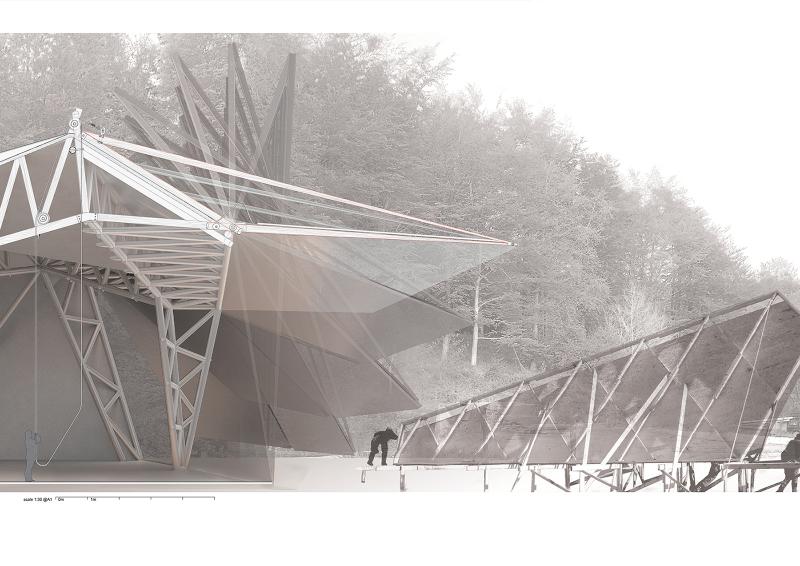Diploma 19 follows the agenda of Design & Make – the new AA Masters course based at Hooke Park. By working collaboratively on a real and to be constructed project the unit and the programme develop individual theses that are derived from a passionate integration of making within design. The vehicle for this joint effort has been the ‘Big Shed’ (a 500m2 assembly workshop, the first of the new campus buildings at Hooke Park), while the exploratory mechanism for this building has been a series of constructed ‘primers’ and prototypes: the sequence of these explorations is described in the Design & Make section of this book.
Individually, the Diploma 19 students were responsible for extracting from the unit brief for the Big Shed a personal design agenda that would ultimately manifest itself in the building design. These concerns were developed during term one through investigative design and the construction of small inhabitable structures (‘primers’) located on or near the actual site of the Big Shed.
Sanem Alper developed an argument for an architecture derived from the performance of its envelope by using the directional evaluation of wind to dictate building form. Sam Nelson took responsibility for integrating the surrounding landscape into the project by utilising the on-site timber while considering the spatial and material implications this had for the building. Olivia Putihrai built light-diffusing structures that provided an informative influence on the façade configuration proposals for the building. Eyal Shaviv pursued an interest in ad-hoc construction processes, formulating an argument for a non-deterministic approach to design and structure. The early experiments of Elena Gaidar explored articulated structures leading to a proposition that the Big Shed should be adaptable in its configuration, allowing the building to maximise its seasonal and functional flexibility. This principle – that the Shed adapts to environmental and programmatic requirements – was identified collectively as the driving concept for the project.
